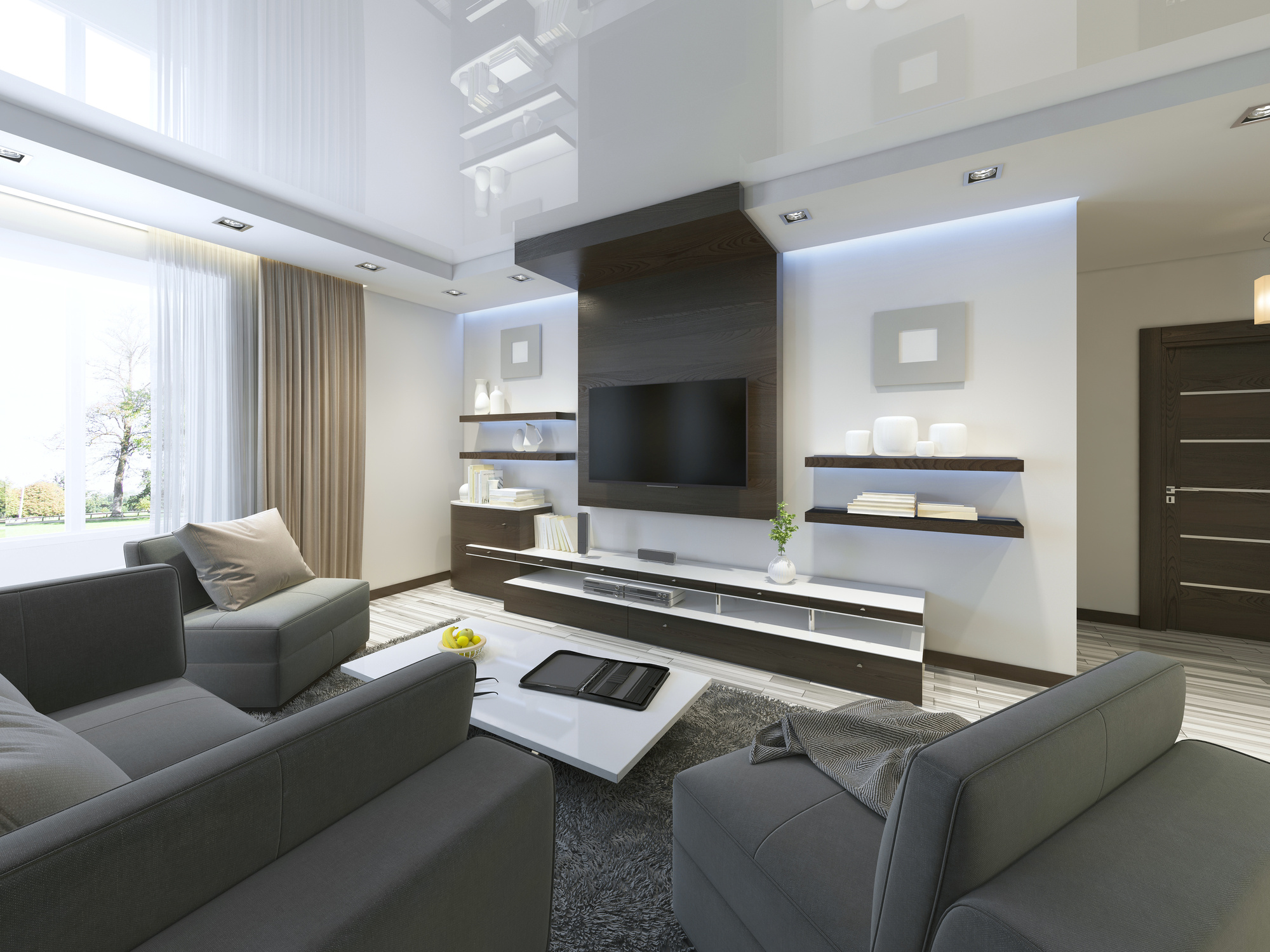Home theatres can add $50K to your home’s value. That added value also saves you money as you watch new movies at home, making the urge to upgrade to a home theatre nothing short of intense.
However, home theatre design seems to have endless options. With so many choices, deciding which features are essential for the luxury home theatre experience can be difficult. But, there are ten things every home theatre should have.
These ten features will bring the ultimate movie experience to your living room. From smart home integration to acoustic treatments, read on to learn how to make your dream home theatre a reality.
1. Luxury Seating
When it comes to home theatre design, seating is critical. Choosing proper seating for your home theatre room is a crucial decision.
For example, many homeowners opt for two or three rows of seating in their home theatres. If this sounds like something you want, consider raising the floor to ensure everyone can see the screen.
For a more elevated experience, ditch the plain sofas and chairs. Instead, opt for high-end seating options with some or all of these luxury features:
- Electric reclining
- Cup warmers/coolers
- Foldable snack trays
- Seat warmers
- Built-in sound
Luxury seating features like these give your home theatre extra comfort and sophistication. They also make you want to use the home theatre more, so you get your money’s worth!
2. Balanced Acoustics and Soundproofing
Creating the perfect home theatre room requires more than just high-quality AV equipment. Balanced acoustic design and soundproofing are essential for a luxury home theatre experience.
Acoustic treatment is vital in providing a clear and immersive sound experience. Soundproofing is also necessary to reduce noise from the outside, such as traffic or pets, which can interfere with audio quality.
Soft furnishings like curtains and rugs can help to absorb excess sound. These features, plus integrated soundproofing, help you enjoy movies without waking the neighbors.
Wall paneling, acoustic insulation, and sound-blocking doors help block out noise from outside. These features reduce distractions that degrade your movie-watching experience.
The best way to integrate soundproofing into your home theatre is through planning. We recommend consulting with AV professionals before committing to a sound design plan. This can help save time, money, and energy by avoiding costly changes down the line.
3. Smart Lighting
Lighting is an often overlooked aspect of home theatre design. Who cares about lighting when you watch movies in the dark, right? Well, how and where you place light fixtures in your home theatre can drastically impact the ambiance and experience.
Placement is the most fundamental aspect when choosing the best home theatre lighting. Take care to place your light fixtures in places that don’t create reflections on your screen. That way, if you keep dim lighting on while watching a movie, you don’t have any annoying glares.
Smart lighting technology further enhances your viewing experience. This type of lighting allows you to choose the brightness and color of your lights by voice commands or apps. Not only is smart lighting convenient, but it’s also impressive and fun to use!
Finally, consider TV backlighting. This tech uses a sensor to detect the colors in the movie. It transmits that information to strip lights behind the screen, allowing them to change color with your film.
TV backlighting is another way to feel more immersed in the on-screen world. It’s also an easy and affordable upgrade for your home theatre.
4. High-Quality Screen or Projector System
Every home theatre’s quality hinges upon one thing: the screen. The options people consider are TVs or the classic combination of a screen and projector. Each option has its merits and downfalls.
For TVs, the higher-end models usually have better image quality and may have a wider viewing angle than projectors. However, TVs tend to be more expensive than projectors when compared side-by-side.
Projectors offer larger screen sizes at lower prices than TVs. They also create a more immersive movie-watching experience. But, it would be best if you had a projector with enough lumens (the measurement of brightness) and contrast ratio to ensure the same picture quality as a high-def TV. Trained AV design professionals can help you decide whether a TV or projector is suitable for your home theatre.
5. Fully-Loaded AVRack
The typical living room with a TV usually houses its AV equipment in an entertainment stand. But, when you elevate to a home theatre, the entertainment stand is among the first things to go. Instead, you end up housing your AV equipment in a rack.
An AV rack holds all the audio-visual equipment needed to complete your home theatre room. It should include the following:
- Streaming devices
- Gaming systems
- Sound control
- Internet/wireless setup
- Cable or satellite boxes
The equipment may be heavy and will become hot while in use. The main component to house these pieces should be a sturdy metal rack, and you should keep them well-ventilated while using them.
A well-designed AV rack will obscure it from view while not in use. So, it will suit your needs without being an eyesore. You can disguise the AV rack as a piece of furniture, place it out-of-view in the back of the theatre, or even house it in a closet.
6. Sound Design
Next to the screen, sound design is the second most crucial home theatre feature. A well-designed sound system can enhance your viewing experience.
Surround sound adds a layer of sensory immersion to your movie and brings you close to the action. Some types of speakers many people use in their home theatres include:
- Soundbars
- Atmos Height Speakers
- Left, right, and center channels
- On or in-wall speakers
- Subwoofers
For the best home theatre design, look for sound design features that enhance the quality or convenience of your viewing experience. For example, smart home tech allows you to control your speakers from anywhere, making it easy to adjust the volume.
While you can DIY the surround sound in your home theatre design, we recommend consulting with a professional. An AV design expert understands how home theatre acoustics and speakers interact and reverberate. So they can best advise you on where and what kind of surround sound works best in your space.
7. Proper Wiring and Cable Management
Proper wiring and cable management techniques are integral to creating the best home theatre design for your space. We recommend hiring an electrician to complete all in-wall wiring, like outlets, lighting, and internet. They will secure and organize each wire so your theatre is safe and functional.
But don’t stop at the wiring inside the wall – you must also practice good cable management in your home theatre. Use surge protectors and invest in quality AV design components to keep your home theatre running as efficiently as possible.
A professional AV designer can help you incorporate these aspects into your home theatre design ideas. They’ll help you design a safe, efficient, and well-organized space that reduces hazards and technical issues.
8. Universal Remotes
Universal remotes are a must-have feature in any home theatre design. With a universal remote, you can adjust the volume and sound settings, dim the lights, and control the climate from one device or app.
A universal remote provides luxury and convenience, allowing you to adjust the smart home automation you added to your home theatre with a few clicks. It’s a great way to ensure you have complete control over your home theatre design ideas, and you can easily change the settings whenever you want.
9. Simple Design Features
When creating the perfect home theatre design, less is more. Home theatres that feature bright colors and excessive décor pose challenges to the viewing experience.
When you design your home theatre, you want to minimize distractions. That means opting for neutral tones on the walls and floors. It would be best if you also avoid certain types of décor like:
- Decorative lighting
- Metal wall hangings/statues
- Framed art or posters
These types of décor create reflective surfaces that can cause glares on your screen. They also may distract you as you watch, detracting from your cinematic immersion.
Choose home theatre features that add to the room’s ambiance, but don’t go overboard. Keep in mind that the best home theatre design will be one that has a balance between simplicity and functionality.
10. Incorporate New Technology
Incorporating new technology in your home theatre can take your space from ordinary to extraordinary. Smarthomes all over the country takes advantage of new tech that changes the home theatre game.
For example, you can set up your home theatre to be 3D-compatible. There are 3D TVs and 3D-enabled projectors to help take your home theatre to the next level.
There is also home automation technology you can take advantage of. For example, some home theatres have drop-down projectors mounted to the ceiling that disappears into it when not in use.
Climate control is another prominent technological feature that helps enhance your home theatre experience. Using smart home technology to adjust the temperature ensures all your guests are comfortable as they watch with you.
AV Design: Your One-Stop-Shop for Home Theatre Design
Home theatre design doesn’t have to be frustrating. And you don’t have to take on this project alone. If you’re ready for the ultimate viewing experience at home, let the professionals at AV Design help.
Our team specializes in smart home design that integrates technology with style. Plus, our commitment to excellence makes us a leader in customer satisfaction.
Don’t let the home theatre of your dreams pass you by. Contact us today for your free home theatre design consultation!



